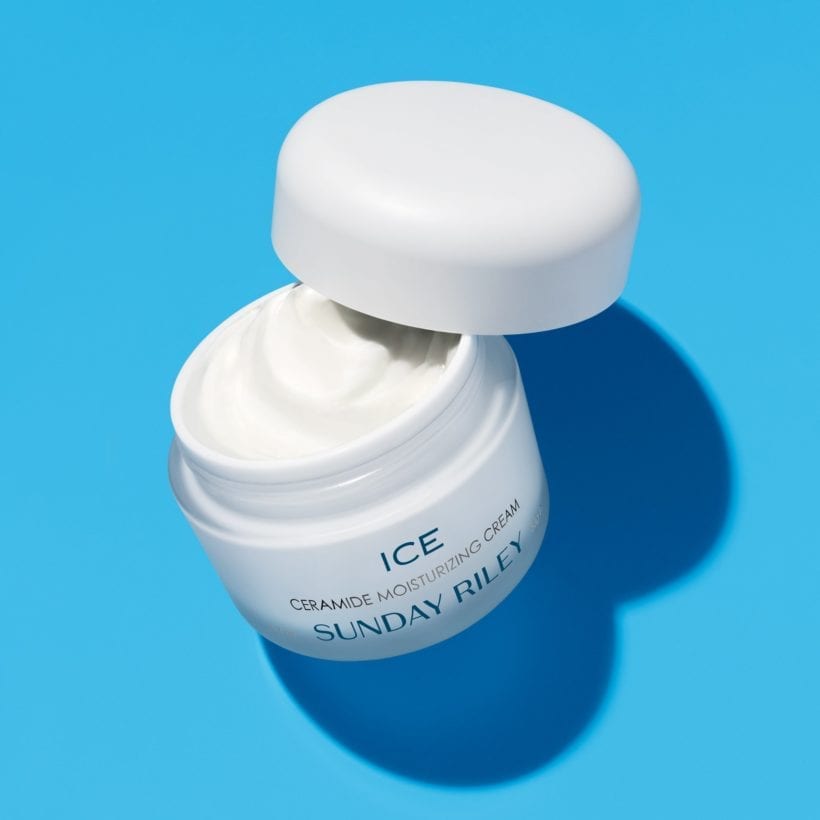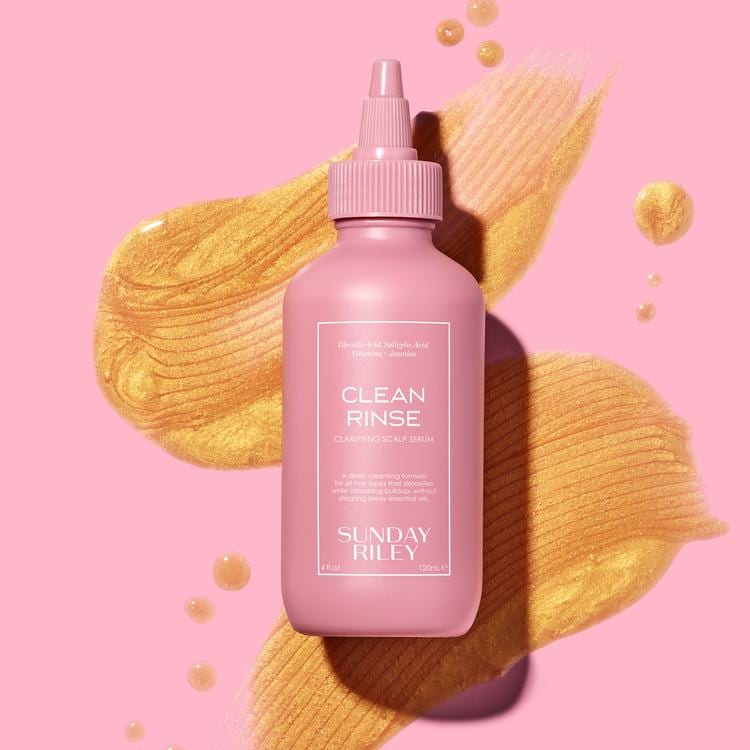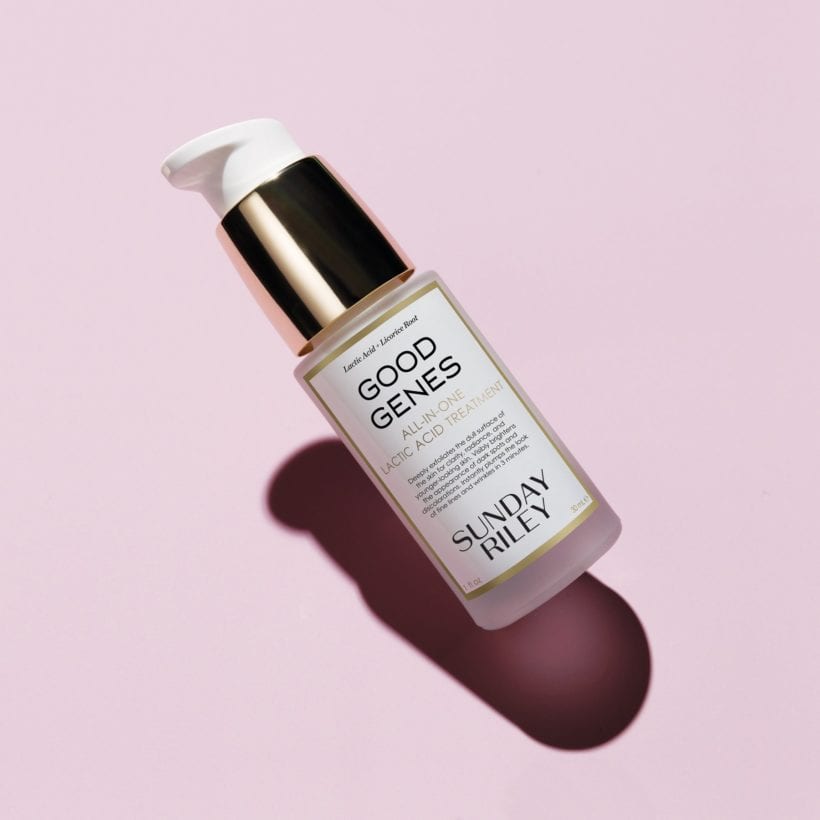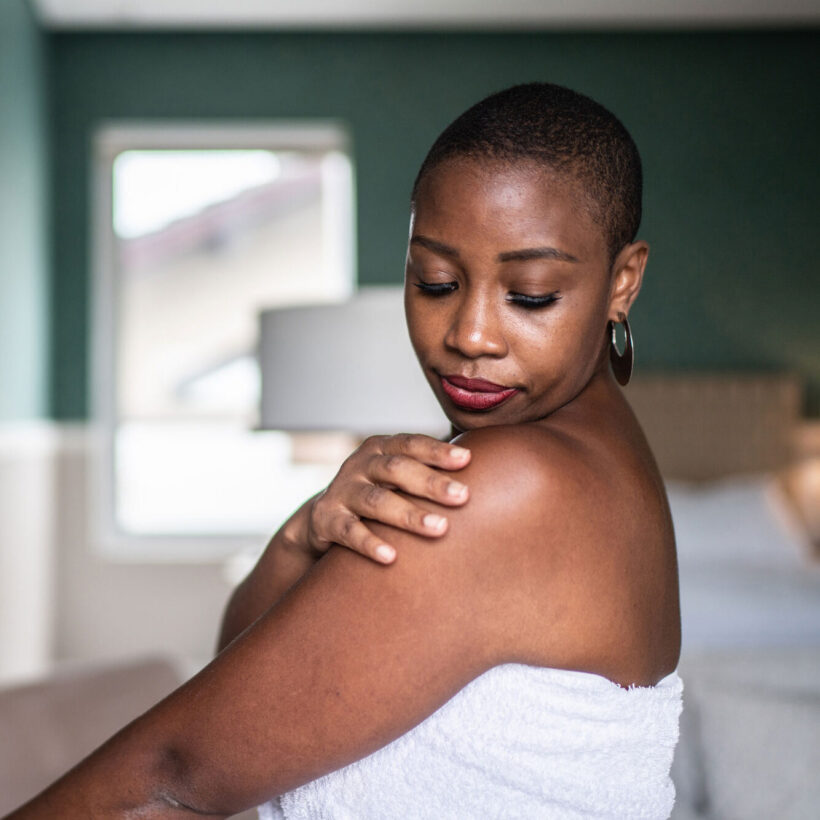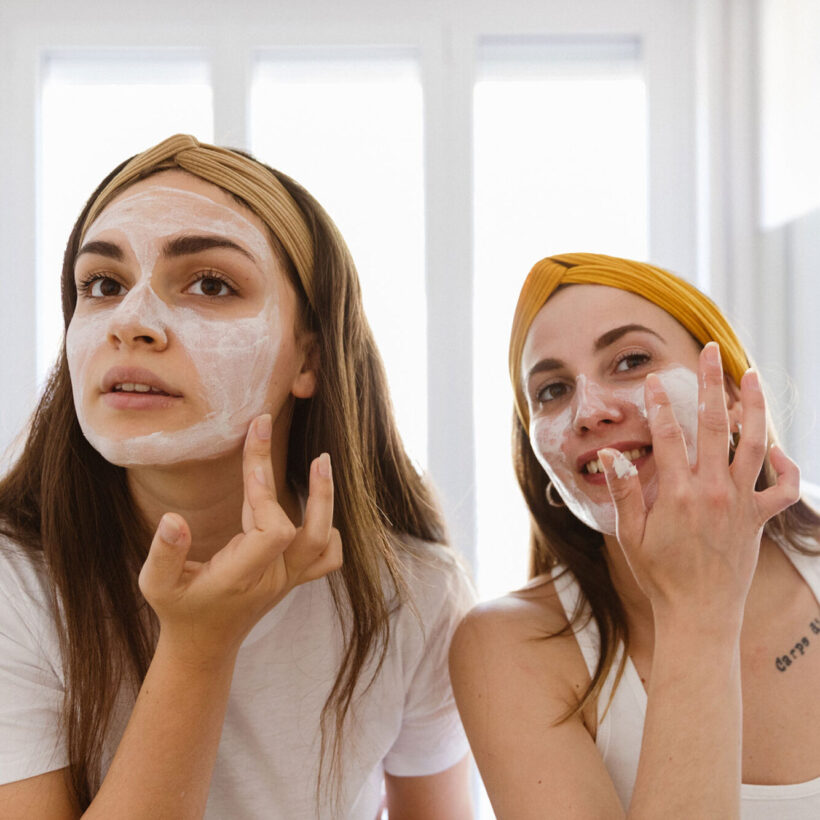There always seems to be a beauty buzzword of the year (brands couldn’t stop talking about niacinamide in 2020, for instance), and this year you can’t click anything on the internet without seeing something about your skin barrier. “Skin barrier,” “microbiome,” “acid mantle” and “lipid layer” are just a few of the skincare terms that are sometimes thrown around interchangeably, but they all have different functions. “It’s important to understand these differences so we can learn how to treat the skin in a more effective way,” says Dr. Marie Hayag, board-certified dermatologist and founder of 5th Avenue Aesthetics.
Unlike so many other beauty fads that come and go, caring for your skin barrier is way more than just a trend. So, if you still don’t know what it is and the important role its different components play in healthy skin, start here with this 101 on skin barrier terminology.
What’s the difference between your skin barrier and skin microbiome?
Your skin barrier is also known as stratum corneum — the outermost layer of your five epidermis layers. “It’s composed of three main components: the microbiome, acid mantle, and lipid barrier,” says Hayag. They call it a skin barrier because “skin is the largest organ of our body and the basic barrier that protects our internal organs,” she adds. It’s your body’s first defense against the outside world (and all the toxic chemicals, allergens, pollution, and free radicals that may come along with it).
Here’s how we break down the skin barrier’s components:
- The microbiome: Also known as skin microbiota or skin flora, it’s a community of organisms living on your skin barrier. “The microbiome contains the acid mantle and lipid barrier, which consists of ‘good’ bacteria that help fight off ‘bad’ bacteria,” says Hayag. “This is why good nutrients, probiotics, and prebiotics are very important ingredients to help fortify the microbiome layer,” she says. There are 39 trillion microbial cells including bacteria, viruses and fungi that live on — and in — us.
- The acid mantle: Located below the microbiome is the skin’s acid mantle. Its main role is to keep the bad stuff out and keep moisture in. “The acid mantle is the area of the skin that consists of sweat and sebaceous glands. The mantle is a slightly acidic layer [with a pH of about 5.5] of film on the surface of the skin that is a defense barrier against bacteria, toxins, pollution, viruses, etc,” says Hayag. The acidity protects against pathogens (bad bacteria) from overgrowing on your skin. “The acid mantle also protects the skin from transepidermal water loss and, in return, helps keep the skin moisturized. When the acid mantle is weakened by harsh products or environmental conditions, such as air conditioners and heaters, our skin’s pH and the microbiome is destroyed leaving the skin more vulnerable to having symptoms like dryness, sensitivity and inflammation,” says Hayag. “The skin’s acid mantle influences skin homeostasis, the integrity of the stratum corneum and defense against microbes,” she says.
- The lipid barrier: The lipid barrier lives under the acid mantle and is basically your skin’s natural fats. You could think of the stratum corneum as a whole like a brick wall. Your skin cells are the bricks and the lipids are the cement. As we get older, our lipids naturally decrease, which is why skin tends to get drier as we age.
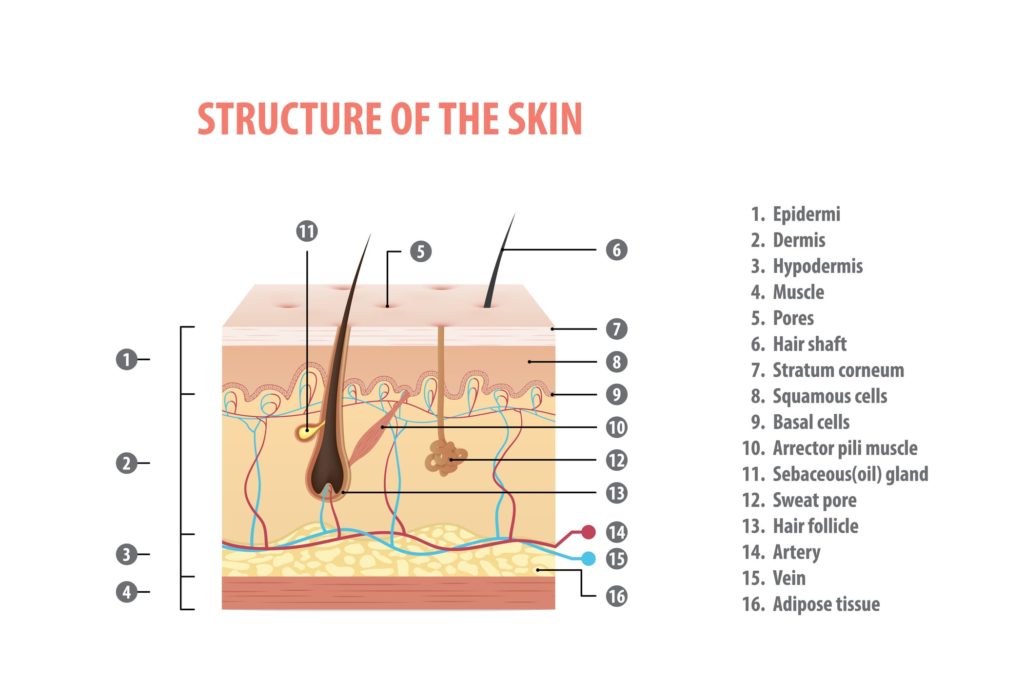
How does the skin barrier affect our overall health?
Your skin barrier is what keeps you alive and well. If your skin barrier is damaged, it gives pathogens an easy entry into your skin and body. If you don’t have a strong skin barrier, your body would also lose water — and we all know that we need water to function. There isn’t a difference between having a healthy skin barrier and a healthy microbiome (they coexist and depend on one another). Studies show that the microbiome “talks” to your immune system, signaling when your body might need to produce extra anti-inflammatory compounds that give your microbiome an assist when it’s feeling out of whack.
A healthy skin barrier and microbiome not only also helps with recovering from skin wounds, but they can also potentially protect you from UV rays, according to research published in Science Advances. It showed that when mice with healthy bacteria on their microbiome were exposed to UV rays, they developed fewer tumors than mice without a healthy microbiome.
How can you tell if your skin barrier is compromised?
If you’re a healthy adult, your skin barrier and its components naturally remain stable, but it’s prone to thinning out as you get older. There are also a lot of other ways that can disrupt or weaken its state:
- Environmental factors: allergens, sun exposure, blue light, exposure to harsh chemicals, chlorine, humidity, pollution, wind, dry air, and other extreme weather conditions.
- Internal factors: genetics that make you susceptible to skin conditions like psoriasis, hormones, medicines like steroids, skin cell turnover, stress, diet, and physical damage to your skin like cuts/scrapes.
- Lifestyle factors: over-exfoliation or over-washing, harsh soaps and cleansers, alkaline detergents, hot showers, and excessive indoor heat.
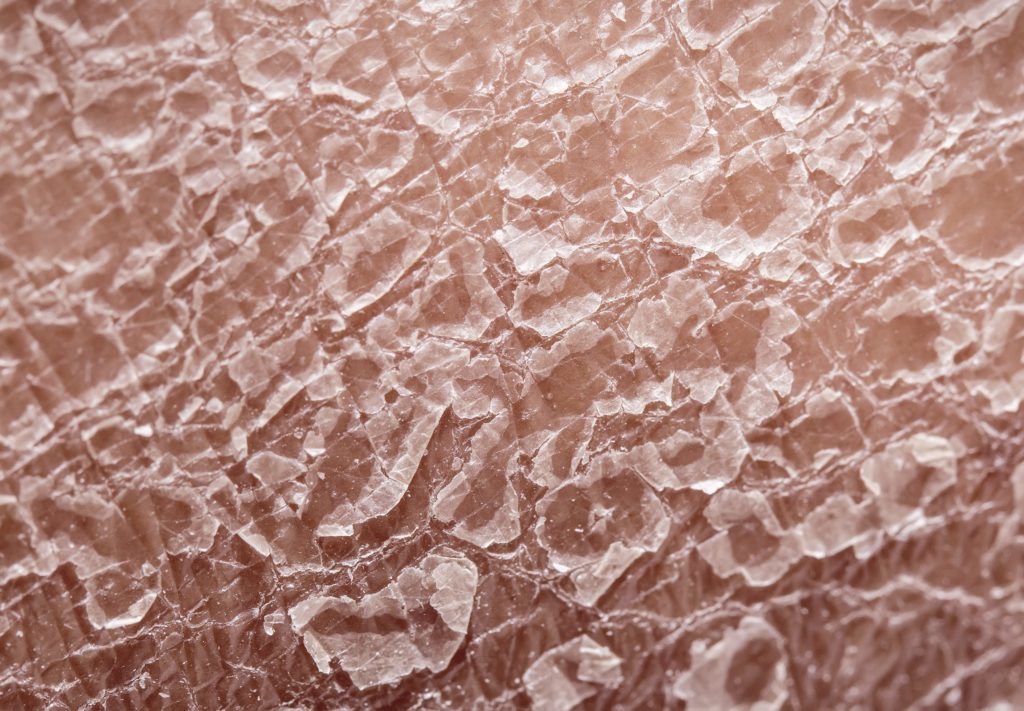
“One way to tell whether your skin is damaged is when your skin becomes irritable, sensitive and sometimes burns. Dermatologists and estheticians use the TransEpidermal Water Loss (TEWL) Scale, which is a standard measurement to determine the strength of skin’s barrier function. The value can be calculated by measuring the amount of water loss in our skin. A low TEWL count means that less water is lost through the skin. A high TEWL count means that skin’s barrier function is weakened, and large amounts of water are escaping from skin,” says Hayag.
“A weakened or damaged skin barrier can trigger skin symptoms like dryness, irritation, and inflammation. It can also trigger transepidermal water loss, which can cause redness, itching, burning, or a tight sensation,” she says. If you’re experiencing psoriasis, contact dermatitis, acne, dandruff, rosacea, premature aging, or skin infections, it’s time to talk to your dermatologist to re-evaluate your products and lifestyle choices that attributed to your compromised skin barrier.
What are the top skincare tips to keeping your microbiome healthy?
There are tons of ways we use our daily skincare routine to help your skin barrier perform and look its best:
- Nourish your skin with probiotics and prebiotics: Prebiotics are “food” for your probiotics to help good bacteria thrive.
- Use pH-balanced skincare products: People think the squeakier clean, the better, but that likely means your skin is stripped of its natural nutrients. “The proper pH of human skin is slightly acidic (4.7-5.5). Some products, like certain harsh cleansers, can make the skin too alkaline and weaken the bacterial barrier. In order for good microorganisms to multiply, it is necessary to restore the proper pH,” says Hayag.
- Look for skin barrier-loving ingredients: Choose products that are rich in moisturizing and rejuvenating properties like ceramides (in Sunday Riley ICE Ceramide Moisturizing Cream), peptides (in Sunday Riley Pink Drink Firming Resurfacing Essence) and niacinamide (in Sunday Riley Clean Rinse Clarifying Scalp Serum).
- Avoid over-exfoliation: Chemical exfoliants are more gentle than the ones with little particles (physical exfoliants).
- Never forget SPF: Protecting your skin against UV rays is the most important thing you could do to help fortify your skin barrier. “During the day, products should primarily protect the skin against external factors [like SPF], while at night the skin should have time to regenerate and rebuild,” she says.
We only recommend products we have independently researched, tested, and loved. If you purchase a product found through our links, Sunday Edit may earn an affiliate commission.

